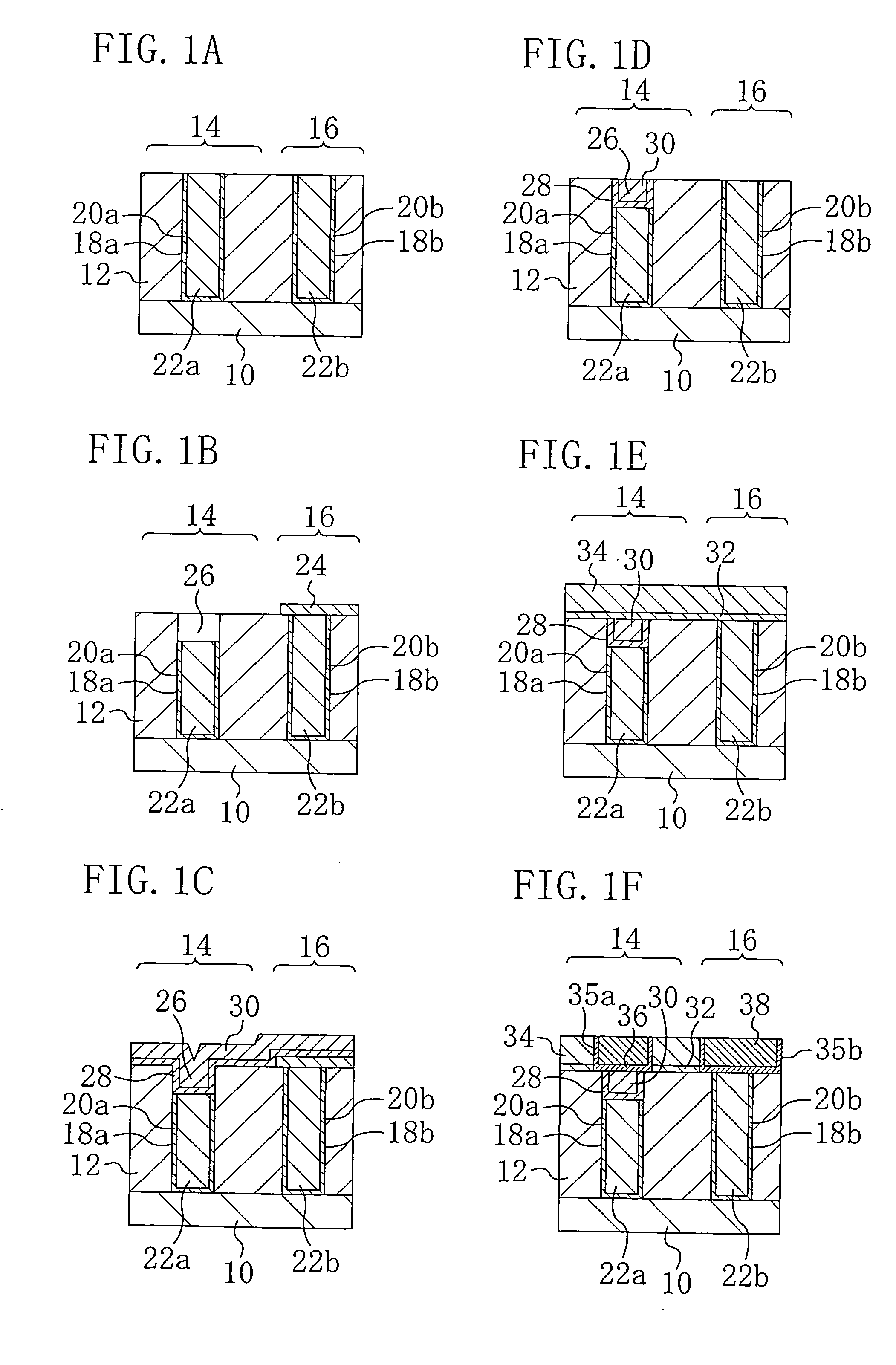Semiconductor memory device and method for fabricating the same
a memory device and semiconductor technology, applied in semiconductor devices, semiconductor/solid-state device details, electrical devices, etc., can solve the problems of difficult reduction of the size of each element, complicated process steps for integrating storage elements, and complicated steps for performing separate steps. to achieve the effect of reducing the size of the devi
- Summary
- Abstract
- Description
- Claims
- Application Information
AI Technical Summary
Benefits of technology
Problems solved by technology
Method used
Image
Examples
first embodiment
(First Embodiment)
[0030] First, a method for fabricating a semiconductor memory device according to the present invention will be described with reference to FIGS. 1A through 1F. FIGS. 1A through 1F are cross-sectional views illustrating respective steps for fabricating a semiconductor memory device according to a first embodiment of the present invention.
[0031] In the method for fabricating a semiconductor memory device according to this embodiment, thermal CVD is first performed in the step of FIG. 1A, thereby forming a first insulating film 12 made of a phosphorus-doped oxide film and having a thickness of 0.8 μm on a 200 mm-diameter silicon substrate 10 on which elements (not shown) are provided. Thereafter, to flat levels generated in an upper surface of the first insulating film 12 resulting from unevenness of an upper surface of the silicon substrate 10, etch back is performed using an inversion mask (not shown) and then flattening is further performed to the first insulatin...
second embodiment
(Second Embodiment)
[0046] In this embodiment, the case where the resistance heating element film 28 and the storage element film 30, which are provided in the first insulating film 12 in the first embodiment, are provided in the second insulating film 34 will be described. FIGS. 4A through 4F are cross-sectional views illustrating respective steps for fabricating a semiconductor memory device according to a second embodiment of the present invention. In this embodiment, a first insulating film 12, contact holes 18a and 18b, adhesion layers 20a and 20b, and tungsten plugs 22a and 22b are first formed in the step of FIG. 4A in the same manner as in the step of FIG. 1A.
[0047] In the step of FIG. 4B, a first barrier film 32 made of SiC or SiN is deposited over the first insulating film 12 and the tungsten plugs 22a and 22b to a thickness of 50 nm by plasma CVD. Subsequently, a second insulating film 34 made of SiO2 or a SiOC film is deposited over the first barrier film 32 to a thickne...
PUM
 Login to View More
Login to View More Abstract
Description
Claims
Application Information
 Login to View More
Login to View More - R&D
- Intellectual Property
- Life Sciences
- Materials
- Tech Scout
- Unparalleled Data Quality
- Higher Quality Content
- 60% Fewer Hallucinations
Browse by: Latest US Patents, China's latest patents, Technical Efficacy Thesaurus, Application Domain, Technology Topic, Popular Technical Reports.
© 2025 PatSnap. All rights reserved.Legal|Privacy policy|Modern Slavery Act Transparency Statement|Sitemap|About US| Contact US: help@patsnap.com



